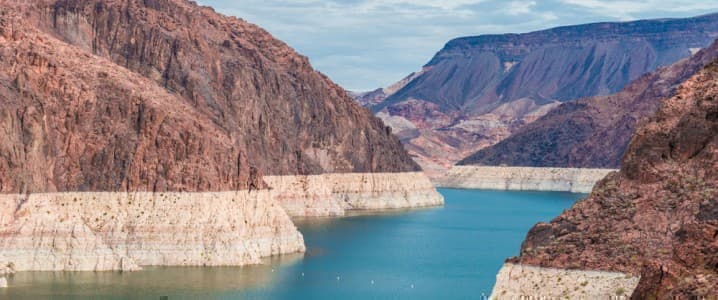The most recent poster child for the failure to understand resource limits is the town of Rio Verde Foothills, an unincorporated part of Maricopa County in Arizona adjacent to Scottsdale. The town's residents were blindsided recently, when the City of Scottsdale ceased allowing water trucks to fill up from the city's water system to service the hundreds of homes in Rio Verde which lack water wells and use water tanks.
The residents still have access to water, but at a price that now averages triple what they were paying, about $660 a month for a thousand gallons. Instead of filling up and riding 15 minutes to Rio Verde, water trucks must now spend up to two hours round trip—after finding a willing supplier.
Warnings about the inevitable water crisis in the American West are not new. The most comprehensive and prescient critique came from author Marc Reisner in 1986 in his classic tale of greed and corruption, Cadillac Desert: The American West and its Disappearing Water. In a previous piece about water and the West I wrote:
It turns out that there is no substitute for potable water—despite what economic theory may wish to assert. To get enough of it in many locales will be increasingly expensive as we turn to ever more exotic means to extract water while both population grows and climate-enhanced droughts diminish replenishment of existing sources.
It's not as if there haven't been warnings for residents of the American West along the way. I had only to look out my airplane window to see the effects of the ongoing drought there as I was approaching Las Vegas. Lake Mead's "bathtub ring"—the result of mineral deposition on the lake floor when water levels were higher—was clearly visible from the air. That was in 2009!
Vast Western water projects such as Hoover Dam which formed Lake Mead lulled generations of westerners into thinking that there would always be a solution to their water needs. It turns out that the solution now is to cut back dramatically on water use. Recently, six of the seven states in the Colorado River watershed agreed on such a plan. But the seventh state, California, rejected that plan and proposed its own.
It is no wonder that the states are having trouble agreeing. The U.S. Bureau of Reclamation which oversees water management of the Colorado River is asking the states to cut water usage from the river by 15 to 30 percent. The California proposal seeks to delay cuts in hopes that more rain will postpone the inevitable.
But that has been the perennial response to water problems in the West. It is reminiscent of such fantasies as "rain follows the plow," a slogan designed to attract settlers to the American Great Plains to cultivate its vast open prairies in the 19th century. An unusually wet period in the Great Plains during the first half of the 19th century lent credence to this idea. But as rainfall returned to historical averages, the result was that marginal lands became unproductive. Ultimately, lack of soil conservation practices and drought led to the Dust Bowl of the 1930s.
The dust has been swirling throughout the American West for decades. And yet, the realization that the region could not sustain a vast expansion of population and agriculture in the face of limited water supplies is only now being acknowledged.
Last month the new governor of Arizona released a report withheld by the previous administration that said a project to build tens of thousands of homes in the West Valley area adjacent to Phoenix will not move forward because there is not sufficient ground water to supply those homes.
Limits to growth have finally arrived in the American West. Pretending they don't exist apparently doesn't work.
ADVERTISEMENT
By Kurt Cobb
More Top Reads From Oilprice.com:
- North Korea Is Becoming A Big Problem For China’s Geopolitical Ambitions
- Is The Fed Finally Winding Down Its Fight Against Inflation?
- Why The White House Is Wrong About Oil Major Share Buybacks


















